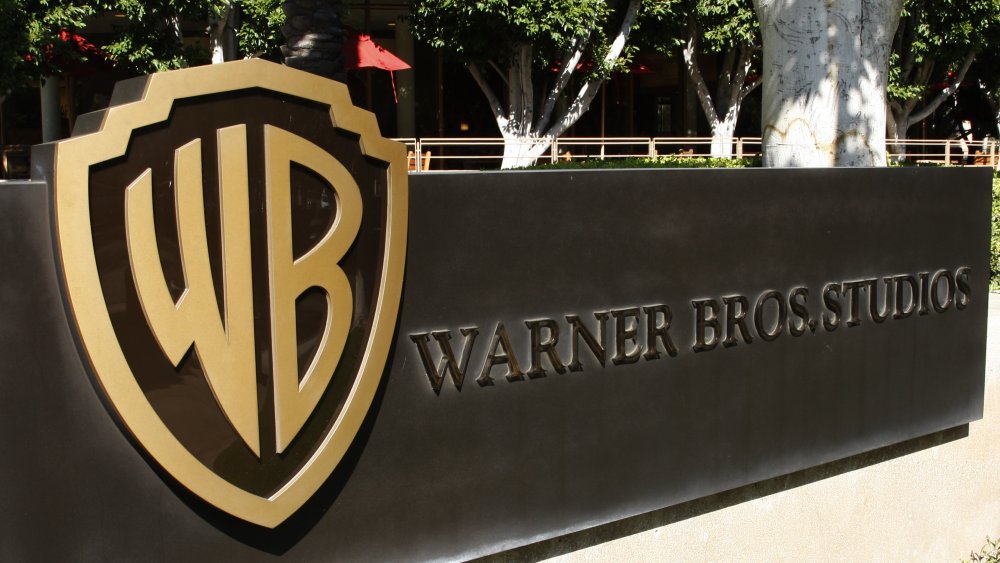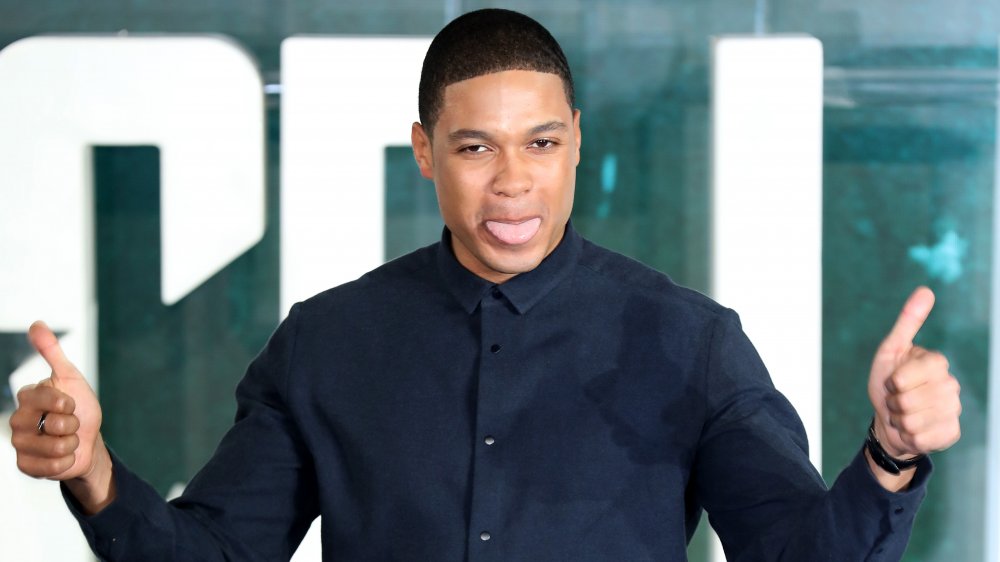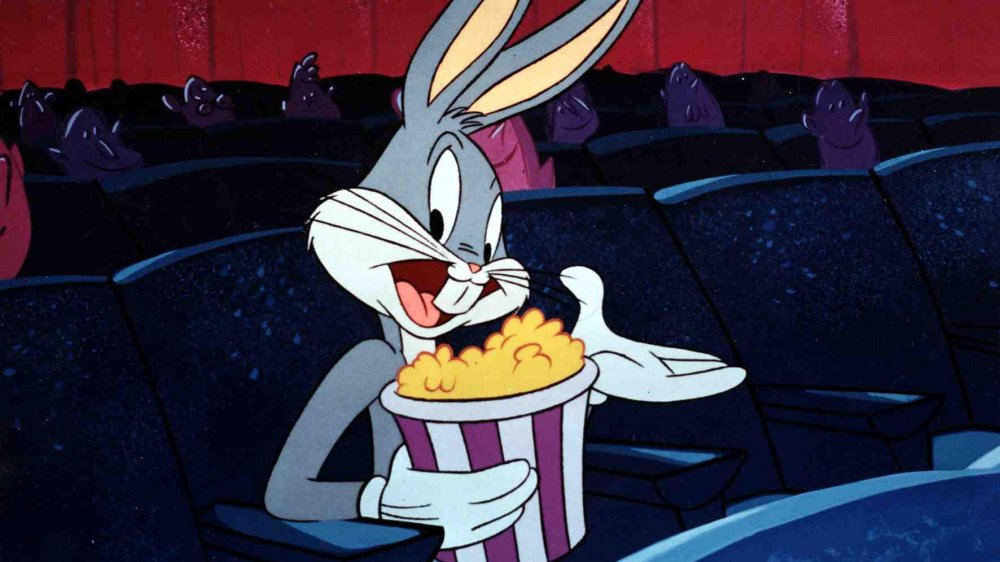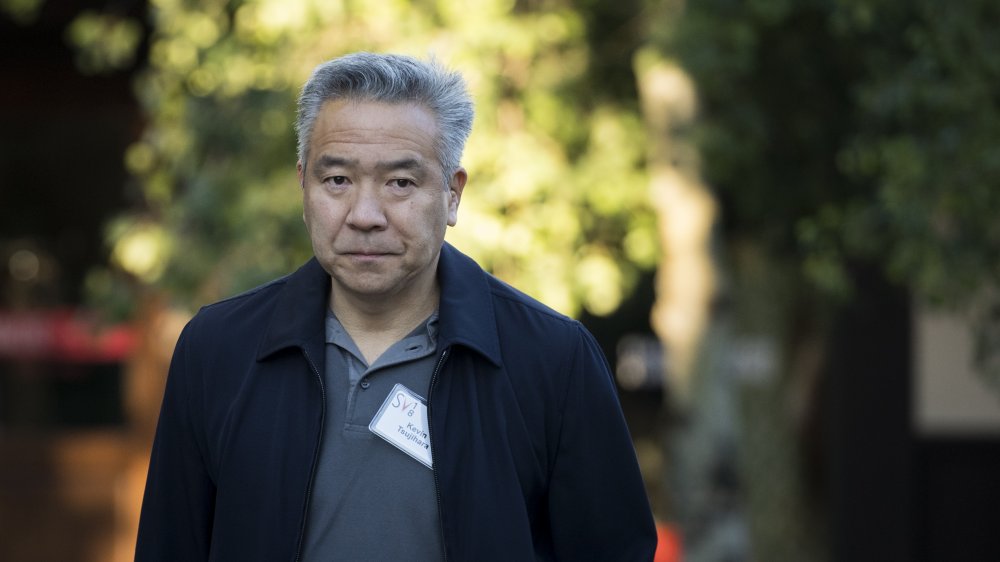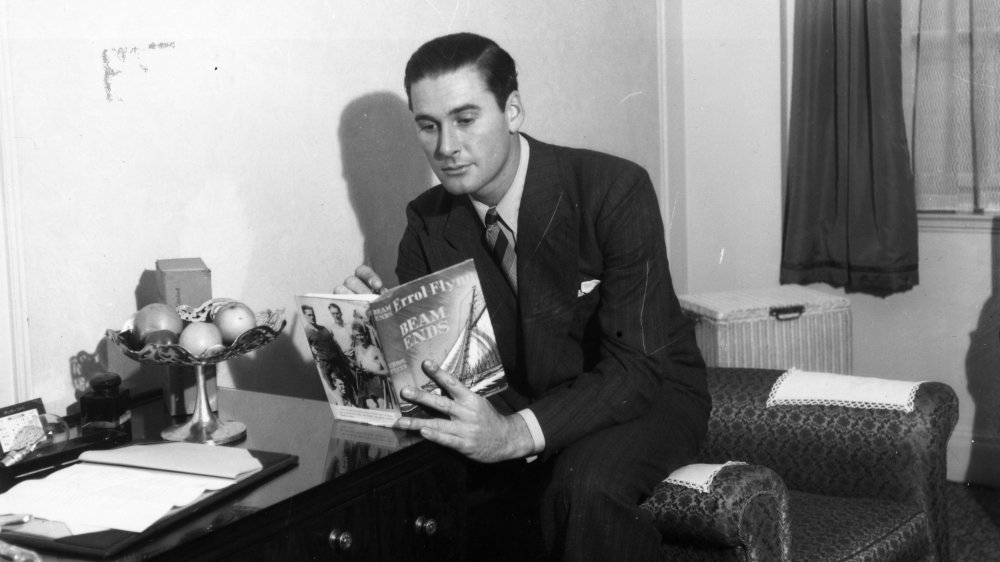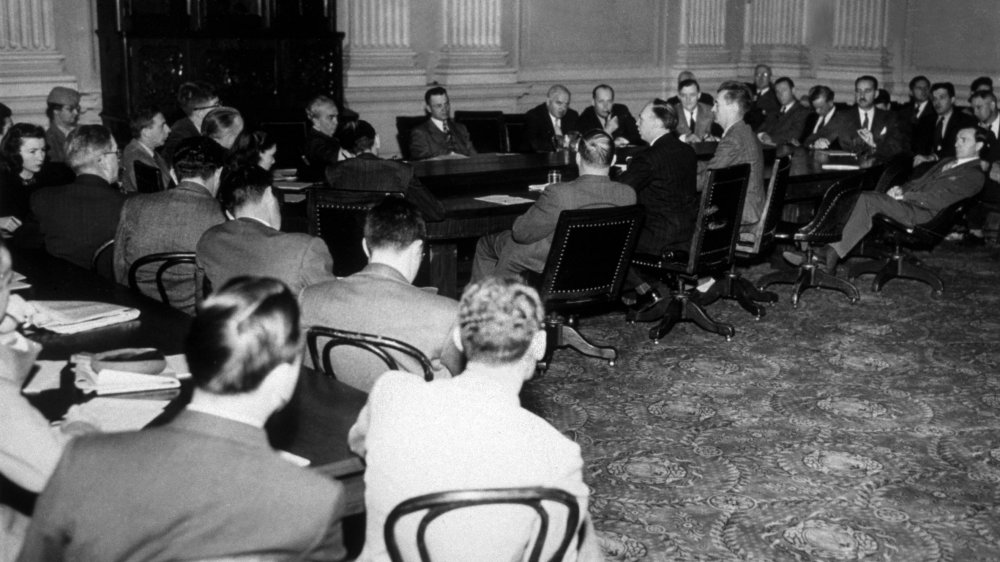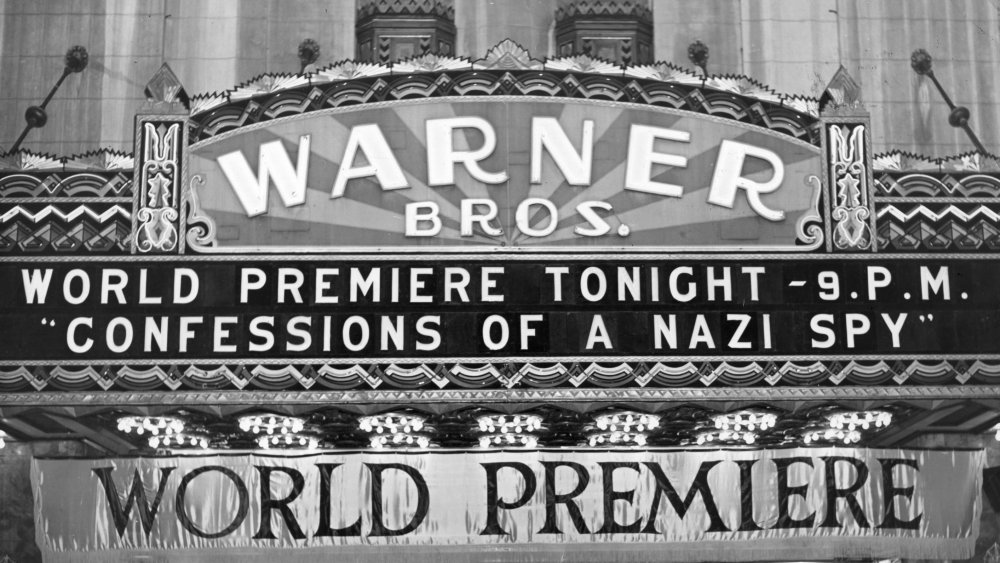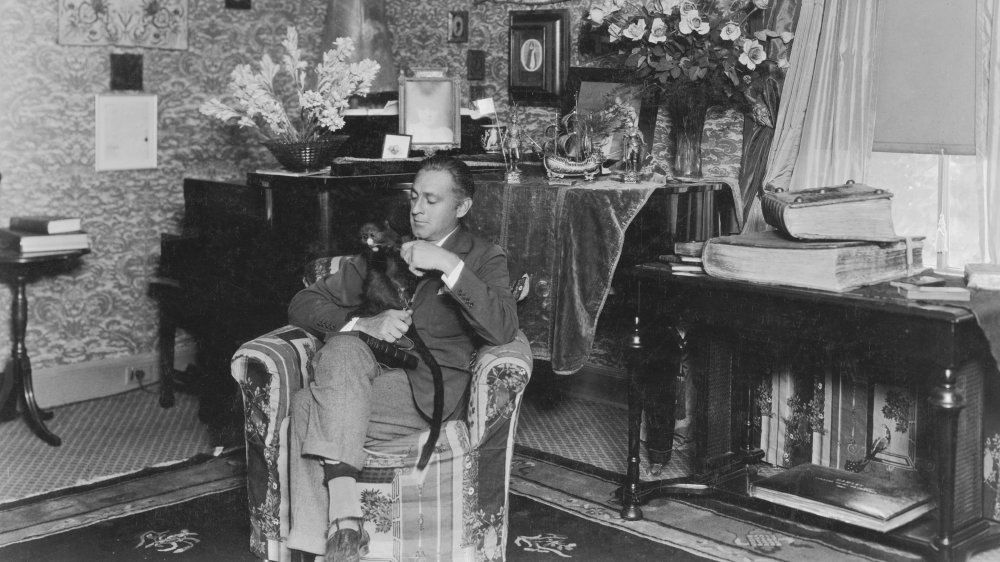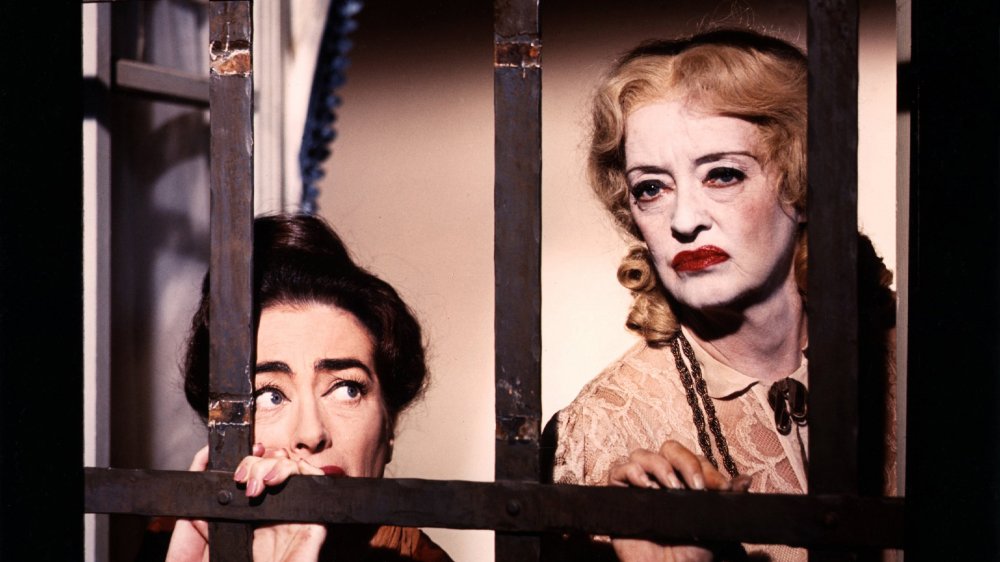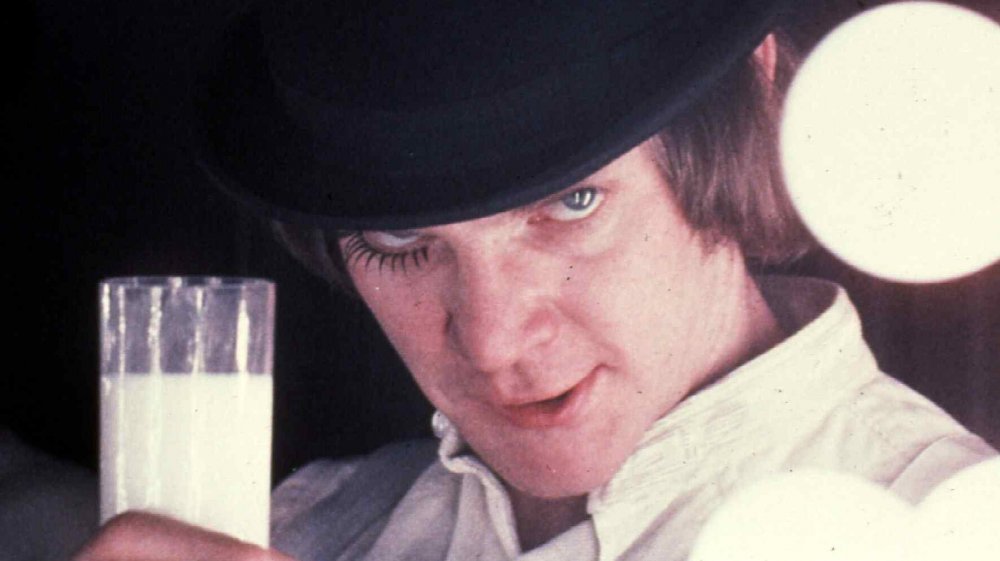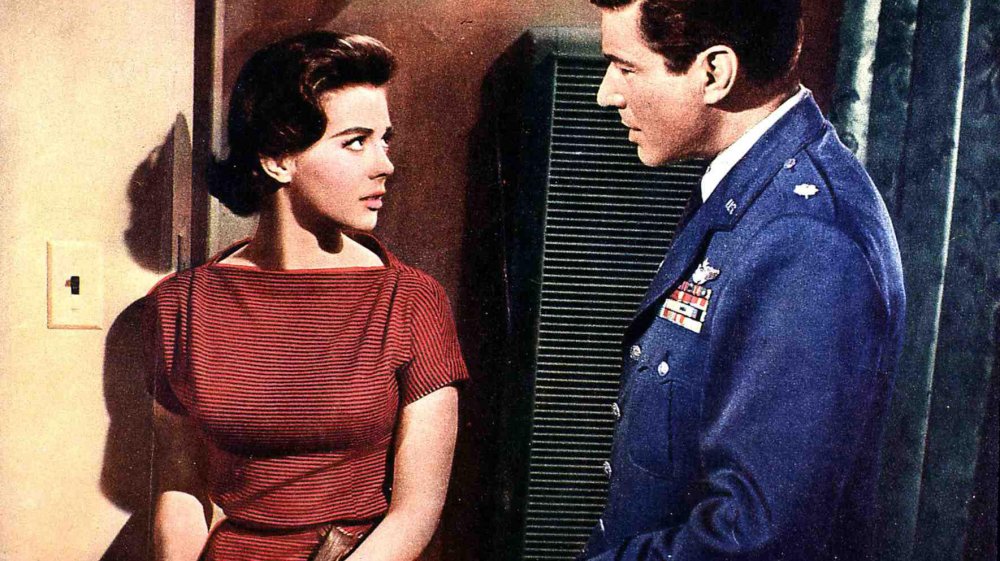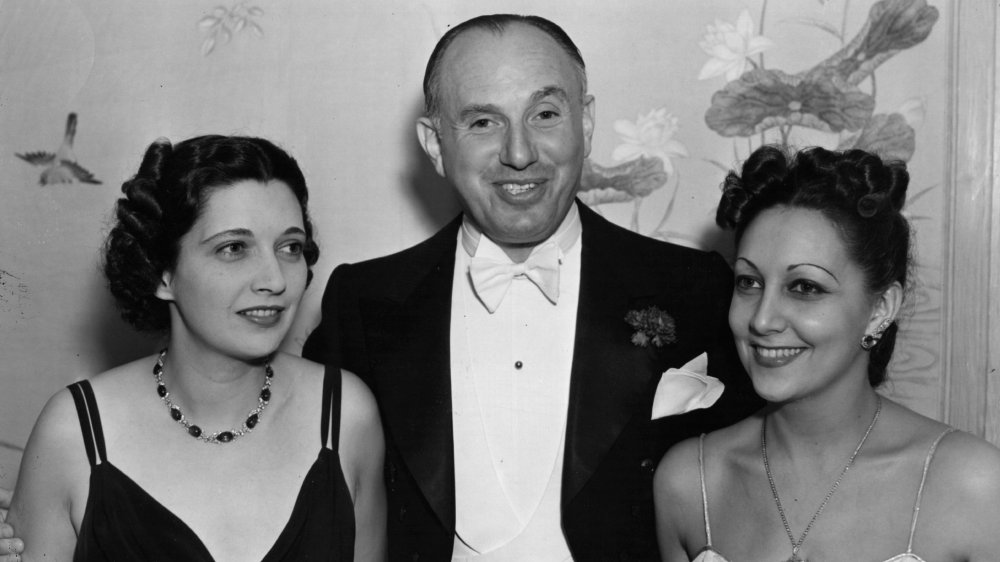The Biggest Scandals To Hit Warner Brothers
The closing lines of the film Pretty Woman sum up the image of Hollywood: "This is Hollywood, land of dreams. Some dreams come true. Some don't. But keep on dreamin' — this is Hollywood. Always time to dream, so keep on dreaming."
Hollywood exists as a sort of Promised Land where heroism, charisma, and a determined drive toward success is met with an applauding audience, immaculate clothing, and unlimited wealth. In this fantastic world, Warner Brothers is the factory that churns out new stars like an assembly line. Since its founding in 1923, the studio has produced some of the most iconic films, actors, and cartoons in American culture — from fantastical franchises such as the Harry Potter and The Matrix to gritty realism in films such as Goodfellas and Casablanca. Stars like Humphrey Bogart, Edward G. Robinson, and Ginger Rodgers helped lead the "Golden Age of Hollywood" while under the banner of Warner Bros., and Looney Tunes pushed animation into new frontiers.
The shows and films of Warner Bros. have warmed the hearts of many generations around the world. However, the work that goes into the art sometimes becomes dirty labor, hiding the secrets and scandals of some of the most powerful people in the company. There are a few demons and devils in this heaven on Earth. Here are some of the biggest scandals to hit Warner Brothers.
Justice League controversy
With the success of Marvel's superhero movies, Warner Bros. decided to create their own cinematic universe using popular superheroes from DC Comics. However, the DC Extended Universe has failed to capture a fraction of the MCU's popularity, especially where its earlier movies are concerned.
One of the characters from these early films was the superhero Cyborg, played by Ray Fisher, who had much to say about his time filming Justice League, the big, Avengers-like gathering of DC superheroes. On June 29, 2020, Ray Fisher sparked controversy when, according to The Hollywood Reporter, he tweeted a 2017 clip of him complimenting director Joss Whedon but wrote that he would "retract every bit of this statement." Two days later, he accused Whedon of being "gross, abusive, unprofessional and completely unacceptable" while working on the film. Back on June 29, he'd also claimed that executives Jon Berg and Geoff Johns had enabled the director's behavior
Warner Media announced that they would investigate his claims. Despite this, the scandal grew as the studio accused Fisher of being uncooperative during the investigation, after which he provided evidence to the contrary, and fellow Justice League star Jason Momoa spoke out in support of Fisher.
According to Variety, Whedon was bought on to replace director Zack Synder, who left the film following a family death. Whedon and Synder's differing styles of filmmaking led to a campaign referred to as "release the Synder Cut." Synder announced that in May 2021, his version of Justice League would be released on HBO Max.
The Censored Eleven
The Looney Tunes characters might be some of the most iconic in pop culture. Bugs Bunny, Daffy Duck, and Elmer Fudd are as engrained in US culture as George Washington. And like the father of the nation, there lies behind all the glory a racist and disturbing past that many wish to brush over with a gallon of whiteout.
As The Verge explained, many cartoons from the early and mid-20th century feature stereotypes that were more commonplace during the era, such as the crows in Dumbo who spoke slang (with the lead crow being named "Jim Crow"). Warner Bros., who have owned the rights to the Tom and Jerry cartoons for more than two decades, have attempted to provide in-video context to racial stereotypes in early episodes of the cartoon series.
However, it's impossible to defend other cartoons produced by Warner Bros. during the Jim Crow era. According to Vulture, Looney Tunes was groundbreaking in terms of adult animation, as unlike Disney and others, the characters made fun of contemporary figures and politics. The Censored Eleven are a set of cartoons by Warner Bros. made between 1931 and 1944 that featured exaggerated African and African American caricatures and stereotypes, with a noticeable few referencing popular films and stories of the period. For example, Snow White and the Seven Dwarfs became "Coal Black and de Sebben Dwarves," and "Goldilocks and the Three Bears" became "Goldilocks and the Jivin' Bears." The cartoons ran in syndication until 1968, according to NPR.
Kevin Tsujihara's MeToo scandal
At the height of the MeToo Movement that exposed a number of Hollywood actors, producers, and directors' inappropriate or criminal offenses against females in the industry, the chairman-CEO of Warner Bros. found himself out of work as well. Kevin Tsujihara, who, according to Variety, had been a part of Warner Bros. since 1994 and promoted to the head of the studio in 2013, was found to be having an extramarital affair with actress Charlotte Kirk and pushing producers into including her on projects.
According to The Hollywood Reporter, the relationship between the actress and the CEO began through a mutual colleague, Australian businessman James Packer. Packer and Kirk met in November 2012, when he was 45 and soon to be divorced, and she was a 20-year-old struggling actress. The pair began a relationship. However, Packer introduced Kirk to Kevin Tsujihara in September of the following year, and text messages revealed Packer pressuring the actress to embrace Tsujihara's sexual advances.
Any questions about the relationship between Tsujihara and Kirk were answered in a series of released text messages, which provided evidence that the pair were in a sexual relationship and that Kirk was pressuring Tsujihara, as well as Tsujihara's colleague, director/producer Brent Ratner, for auditions and roles in films with Warner Bros. According to Variety, the issue was first investigated in 2017, but no evidence was found. By 2019 however, the dam finally gave way, and Tsujihara resigned from his position in March.
Errol Flynn's statutory rape trial
Speaking of powerful men using their status to prey on women, let's go back to 1943. Long before the MeToo Movement hit the front pages in the late 2010s, sexual abuse was not foreign in Hollywood. Combine an inflated celebrity ego and paycheck, a sense of entitlement, and an awestruck fanbase, and what comes is a culture of harassment. That being said, when Warner Bros. star Errol Flynn was put on trial for statutory rape, it was front-page news.
According to Britannica, Flynn was typecast as the dashing, energetic hero on film, and outside of the screen, he was "an irrepressible drinker, carouser, and womanizer." Flynn was arrested in 1942 for the statutory rape of two women. History Collection reports that the two women, Peggy Satterlee and Betty Hansen, were 17 years old at the time and said that Flynn seduced them on his yacht and at a friend's home, respectively.
Flynn's team of lawyers were able to paint the two women in an unfavorable light, bringing up their previous affairs and abortions. According to The Hollywood Reporter, the jury, made up of nine women and three men, took only 13 hours to acquit Flynn. Despite avoiding jail time, Flynn's reputation took a permanent hit, and he never reached his previous level of fame again.
Union strikes and HUAC hearings
Arthur Miller's 1953 play The Crucible, which was set during the Salem Witch Trials, was inspired by HUAC, or the House Un-American Activities Committee, hearings of the late 1930s through the 1950s. Similar to Miller's characters, many accusers during the HUAC hearings sought retribution over any sense of justice or good.
With the rise of fascism and Nazism in Italy and Germany and the alliance with the Soviet Union during World War II, the Warners became outspoken critics of the Axis Powers and, according to KCET, worked with the US government to produce patriotic and anti-fascist content. After the war ended and the Soviet-US rivalry ignited, studios and the government turned their guns to any left-wing movement. Less than two months following the end of WWII, striking workers at Warner Bros. fought non-strikers as the former blocked the employee entrance, resulting in a number of injuries. The day became known as "Black Friday" or "Bloody Friday," according to the LA Times. WB and the government would not forget this event.
According to Britannica, anti-Communist paranoia and strikes such as the one at WB led to anti-union legislation such as the Labor-Management Relations Act of 1947. When Jack Warner testified at a HUAC hearing that year, he pointed the finger at a dozen individuals as being Communists. The Hollywood Reporter states that not only were some of the accused not Communist but that one, screenwriter Howard Koch, was named by Warner as revenge over his involvement in the 1945 WB strike.
Antitrust laws and a Supreme Court decision
According to the ABA Journal, Hollywood in 1948 was like a "large inverted pyramid, top-heavy with real estate and theaters." An estimated 70 percent of the profits for the major Hollywood studios were from the theaters they owned. Essentially, the studios held a monopoly on films.
In July 1938, the government filed suit for violating the Sherman Antitrust Act, History explains. While only one of the major Hollywood studios, Paramount, was the main defendant, all of the seven major studios, MGM, Columbia, Universal, RKO, Paramount, 20th Century-Fox, and Warner Bros., were included. According to the American Law and Economics Review, the Paramount antitrust litigation was a series of eight actions, spanning more than a decade, pushed by the Department of Justice with the main goal of breaking up the studio system and forcing the major studios to trade off their theaters.
The violation of which the government accused the studios was their total control over movie distribution and exhibition. The seven studios owned almost every theater in the country and practiced block booking, which entailed applying pressure on independent theater owners to buy multiple films from a studio at once.
In the spring of 1948, in the landmark United States v. Paramount Pictures, et al., the Supreme Court ruled 7-1 in the government's favor. The studios were forced to sell off their theaters and end the practice of block booking by selling each final film individually instead of as part of a block.
John Barrymore's personal life
John Barrymore became one of the first great American film stars. The Barrymore family is to Hollywood what the Kennedy family is to politics, and John became a bankable star at Warner Bros. However, as The Famous People reports, John had suffered from alcoholism since he was a teen, and eventually, it destroyed the pristine image he had established.
Nicknamed "The Great Profile," John Barrymore, according to Britannica, was both a star on the stage and in film. His parents, Maurice and Georgiana, were stage actors, while his siblings, Ethel and Lionel Barrymore, both reached Hollywood stardom as well. Unlike their brother, the two siblings did win Oscars during their careers, but according to Film Star Facts, both paled in comparison to John. Barrymore found success in both the both silent movie era and in "talkies" during his height in the 1920s and '30s, though his stardom in films only began after mastering the stage during the 1910s and '20s, including his most iconic roles playing the leads in Shakespeare's Hamlet and Richard III.
However, during these periods, Barrymore's excessive drinking and outrageous behavior slowly killed both his stardom and him. Toward the end of his life, Barrymore declared bankruptcy and began to use his celebrity status for radio in order to make money. His final film, Playmates, had Barrymore playing a washed-up Shakespearian actor. Per the LA Times, on May 14, 1942, during an appearance on a radio program, Barrymore announced his retirement from acting. A bit over two weeks later, he was dead.
Bette Davis vs. Joan Crawford
What Ever Happened to Baby Jane? is one of Hollywood's most iconic films — just as iconic as the feud between its two leads, Bette Davis and Joan Crawford. The feud has become so well-known that in 2017, FX aired a critically renowned documentary miniseries, Feud.
The feud between the two actresses began decades prior to the 1962 film. According to Harper's Bazaar, Crawford was already an established star with a classic Hollywood marriage to actor Douglas Fairbanks Jr. when Davis entered the movie industry. In 1933, Davis' film, Ex-Lady, was being promoted by Warner Bros. as the first with her name above the title. The planned announcement by WB ended up being overshadowed by Crawford announcing her divorce from Fairbanks, which crippled the film's promotion. Two years later, Crawford married actor Franchot Tone, whom Davis had co-starred with that same year and had fallen in love with.
By the time the two paired for Baby Jane, the actresses had traded jabs and rumors over the decades. Black and White Movies reports that the set became a battleground. The women spent nights complaining about the other to director Robert Aldrich, openly spoke ill of one another on set, and even hurt each other while filming scenes. At the 1963 Oscars, Crawford got the last laugh, as, according to Vanity Fair, Davis lost the Best Actress award to Anne Bancroft, who was absent. None other than Crawford went onstage to accept the award.
A Clockwork Orange
When "New Hollywood" took shape in the counterculture and film schools of the 1960s and 1970s, many of the regulations and taboos that were once placed on movies became irrelevant. The gates of Hell opened, and out came the Devil himself ... or a sadistic British teenager speaking slang. In comes 1971's A Clockwork Orange.
Though Warner Bros. had released controversial films prior, such as 1967's Bonnie and Clyde, and would release other films like Deliverance and The Exorcist the next two years, the Stanley Kubrick-directed film remains infamous for the backlash received upon its initial release. The movie followed the main character Alex, played by Malcolm McDowell, a young teenage boy who, with his gang of friends or "droogs" as he refers to them, inflicts violence upon passersby in a future-punk England. In an interview with The Guardian, McDowell said he watched violent movies and concentration camp footage for months with Kubrick to prepare for the role. According to Open Culture, British officials lobbied to have the film cut from circulation for fear teens would copy the violence portrayed in it. Following incidents of young people committing crimes and the film being blamed for it, Kubrick and Warner Bros. withdrew it from circulation in 1974.
Anthony Burgess' website reports that the film based on his book was banned in South Africa and Brazil and had to be cut down to appease the authorities in Argentina, while Britain's film authorities gave the movie an X-rating.
The lifetime of abuse inflicted on Natalie Wood
A great number of tragedies have befallen former child stars. This potentially comes with a combination of an unstable home life, reliance on individuals who do not have the child's best interest in heart, and the child developing unhealthy addictions and beliefs. Unfortunately, one of Hollywood's greatest actresses, Natalie Wood, who signed with Warner Bros. after high school, experienced all this and more.
According to BBC News and Little Things, this abuse began in her own home by her overbearing mother, Maria Gurdin, who pushed the child into stardom at the young age of five. In one emotional episode, Gurdin tore the wings off a butterfly to make her daughter cry on cue. While filming The Green Promise in 1949, a ten-year-old Wood suffered a broken wrist during a scene. Her mother forced her to hide the injury, and her wrist never healed correctly. Wood hid the protruding bone with bracelets for the remainder of her life.
By the age of 14, Natalie had appeared in over 20 films. During her teen years, Wood was pushed into relationships with much older men, such as Frank Sinatra and her director in Rebel Without A Cause, Nicholas Ray, according to LA Mag. At 16, Woods was assaulted by a "powerful, married movie star" according to Suzanne Finstad's book, Natasha: The Biography of Natalie Wood. Wood's death at 43 years old remains one of Hollywood's great mysteries, as many still believe her husband, actor Robert Wagner, might have played a role in it.
The Warner brothers' relationship
"Warner Bros." isn't just a name. The Warners, Harry, Albert, Sam, and Jack Warner, all built and ran the company that shared their name into an institution in American life. At the same time, like many of the actors, directors, producers, and writers they employed, there were a number of skeletons in their own shared closet.
Hollywood Stories summarizes the four brothers as such: the womanizing Jack, the conservative Harry, the quiet Albert, and the visionary Sam. Despite their differences, the four brothers were able to get along for a period, until 1927, when Sam Warner, whose contributions helped make the first-ever "talkie," died of a brain tumor two days before its release. The Jazz Singer was a hit and became a game-changer in Hollywood. After Sam's death, Jack and the two surviving brothers spent the rest of their days feuding.
Harry and Jack's relationship was the most strained in the family, as their personalities led to many conflicts. According to The Famous People, Harry was conservative, whereas Jack (pictured above) was wild and flamboyant. Harry was married once, while Jack was known as a playboy. Harry refused to help HUAC, while Jack was more than happy to paint any enemy as a communist. However, their relationship came to an abrupt end when Jack tricked Albert and Harry into selling their shares of the company just so Jack could buy it all and become the head. The brothers never spoke again after that.
